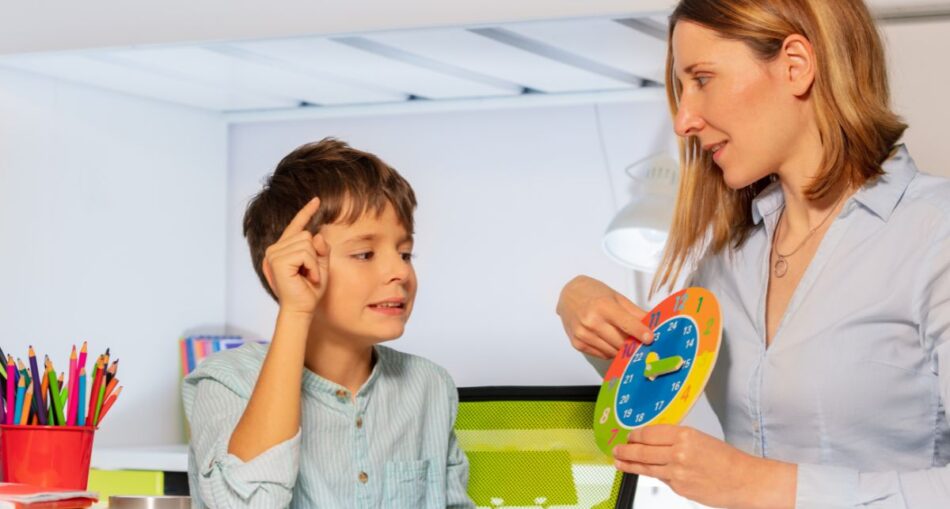Autism Spectrum Disorder (ASD) affects children in diverse ways, influencing how they communicate, interact socially, and respond to their environment. One of the most widely recognized and evidence-based treatments for ASD is Applied Behavior Analysis (ABA) therapy. Backed by decades of research and clinical success, ABA therapy offers children with autism a structured yet flexible path toward meaningful development, independence, and confidence.
In this article, we’ll explore what ABA therapy is, how it supports children with autism, and why so many families see it as a life-changing tool for their child’s progress.
Understanding ABA Therapy
Applied Behavior Analysis (ABA) is a scientific approach to understanding behavior and how it is affected by the environment. ABA therapy uses evidence-based techniques to teach new skills, reduce unwanted behaviors, and promote positive behaviors through reinforcement.
The core principles of ABA involve:
- Breaking down complex skills into small, manageable steps
- Using positive reinforcement to encourage desired behaviors
- Tracking data to measure progress
- Individualizing strategies for each child’s unique needs
Therapists create customized treatment plans based on a child’s strengths, needs, and goals. Sessions can take place in various settings such as at home, in clinics, schools, or through telehealth.
Key Benefits of ABA Therapy for Children on the Autism Spectrum
1. Improved Communication Skills
One of the most profound challenges for many children with autism is communication—whether verbal or non-verbal. ABA therapy targets specific communication goals such as:
- Making eye contact
- Requesting items
- Responding to questions
- Engaging in conversation
Through techniques like Discrete Trial Training (DTT) and Natural Environment Teaching (NET), children learn how to communicate effectively in both structured and natural settings. For non-verbal children, therapists may also use tools like PECS (Picture Exchange Communication System) or Augmentative and Alternative Communication (AAC) devices.
2. Enhanced Social Skills
Children on the autism spectrum may find it difficult to initiate play, understand social cues, or form peer relationships. ABA therapy helps children:
- Learn how to take turns
- Maintain appropriate personal space
- Understand emotions and facial expressions
- Engage in cooperative play
Therapists often incorporate social skills groups, role-playing, and peer modeling to simulate real-life social interactions. These experiences build confidence and help children navigate social environments more successfully.
3. Reduction of Challenging Behaviors
Some children with autism may exhibit behaviors like tantrums, aggression, or self-injury due to communication frustration or sensory overload. ABA therapy identifies the function of the behavior—whether the child is trying to escape a task, seek attention, or express a need—and replaces the behavior with more appropriate responses.
Behavior analysts use techniques such as:
- Functional Behavior Assessments (FBA)
- Behavior Intervention Plans (BIP)
- Positive Behavior Supports (PBS)
These strategies not only reduce harmful behaviors but also teach the child how to express themselves more safely and effectively.
4. Building Independence
ABA therapy emphasizes the importance of daily living skills, helping children become more self-sufficient as they grow. These skills may include:
- Brushing teeth
- Getting dressed
- Using the toilet
- Preparing simple meals
Therapists use task analysis to break these routines into small steps, ensuring children can learn each part at their own pace. As children master these skills, they gain a sense of pride and autonomy, improving their quality of life and easing the caregiving load on families.
5. School Readiness and Academic Support
ABA techniques can be applied to help children succeed in academic environments. Therapy often focuses on:
- Following classroom routines
- Attending to tasks
- Managing transitions
- Understanding instructions
Some ABA providers work closely with schools and teachers to ensure consistency between home and classroom behavior plans. This collaboration promotes smoother integration and better learning outcomes.
Family Involvement in ABA Therapy
A crucial part of ABA therapy is involving parents and caregivers. Families receive coaching on how to:
- Reinforce skills at home
- Respond consistently to behaviors
- Create supportive routines
This parent training not only extends the benefits of therapy beyond the session but also strengthens the family-child bond. Parents often report feeling more empowered and better equipped to support their child’s development.
Progress Looks Different for Every Child
It’s important to understand that ABA therapy is not a one-size-fits-all solution. Children progress at different rates depending on their unique strengths, challenges, and consistency of support. Some children may begin speaking for the first time, while others may show improvements in attention, play skills, or behavior regulation.
Success in ABA therapy is defined by meaningful gains that enhance the child’s life and help them reach their full potential.
Common Misconceptions About ABA
Over the years, ABA therapy has evolved to become more child-centered and compassionate. However, some misconceptions still exist, including:
- “ABA is too rigid.” Modern ABA is highly flexible and uses naturalistic approaches to learning.
- “It’s only for young children.” While early intervention is critical, ABA therapy benefits individuals across all ages.
- “ABA tries to change who the child is.” The goal of ABA is not to make a child “less autistic,” but to support communication, independence, and safety.
When delivered ethically and respectfully by trained professionals, ABA therapy can be a powerful, positive force in a child’s life.
Choosing the Right ABA Provider
Finding the right provider is essential. Look for:
- Board Certified Behavior Analysts (BCBAs)
- Individualized treatment plans
- Clear communication with families
- Ongoing assessment and adjustments
Many providers offer a free consultation to help families learn more about services and determine if ABA is a good fit for their child.
Looking for in-home ABA services in North Carolina? We provide personalized, family-centered therapy right in your home to help your child build essential skills and thrive every day.
Final Thoughts
ABA therapy has transformed the lives of countless children on the autism spectrum and their families. By promoting skill development, reducing challenging behaviors, and encouraging independence, ABA helps children thrive in their own way. Whether it’s learning to tie their shoes, make a friend, or express their needs, every victory counts.
When families and therapists work together with compassion and purpose, children with autism are given the tools they need to grow, connect, and succeed.







